Ethylene glycol flash point
Home » datasheet » Ethylene glycol flash pointEthylene glycol flash point
Ethylene Glycol Flash Point. 1530 vol NFPA Rating. For a heat transfer system with ethylene glycol the circulated volume must be increased compared to a system only with water. Flash PointC-200 C - closed cup. Ethylene glycol dinitrate abbreviated EGDN and NGc also known as nitroglycol is a chemical compound a colorless oily explosive liquid obtained by nitrating ethylene glycolIt is similar to nitroglycerin in both manufacture and properties though it is more volatile and less viscousUnlike nitroglycerine the chemical has a perfect 0 oxygen balance meaning that its ideal exothermic.
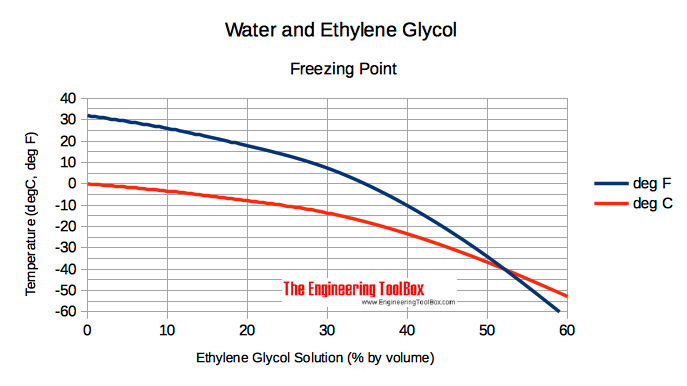 Ethylene Glycol Heat Transfer Fluid Properties From engineeringtoolbox.com
Ethylene Glycol Heat Transfer Fluid Properties From engineeringtoolbox.com
Which solution will have the lowest boiling point. Loading dose 15 mgkg intravenously follow by bolus dose of 10 mgkg every 12 hours. What is mono ethylene glycol used for. Antifreeze fluids degrade over time and normally should be changed every 35 years. COMPOSITION ETHYLENE GLYCOL 100 107-21-1 4. Ethylene glycol is a clear colorless syrupy liquid.
COMPOSITION ETHYLENE GLYCOL 100 107-21-1 4.
Ethylene oxide can be used as a precursor to synthesize. Ethylene Glycol must not be used due to toxicity so non-toxic Propylene Glycol is used. The main use of EG in the dehydration of natural gas is in depressing the hydrate temperature in refrigeration units. After 48 hours increase bolus dose to 15 mgkg every 12 hours. Ethylene glycol has superior heat transfer efficiency due to lower viscosity - but more fluid must be circulated to transfer the same amount of energy since. It dissolves easily in waterEthylene oxide is a man-made chemical that is used primarily to make ethylene glycol a chemical used to make antifreeze and polyester.
 Source: researchgate.net
Source: researchgate.net
Flash PointC-200 C - closed cup. Ethylene glycol Revision Date 17-Jan-2018 Unsuitable Extinguishing MediaNo information available Flash Point 111 C 2318 F Method - DIN 51758 Autoignition Temperature 413 C 7754 F Explosion Limits Upper 1530 vol Lower 320 vol Sensitivity to Mechanical ImpactNo information available Sensitivity to Static DischargeNo information available. 111 deg C 23180 deg F Autoignition Temperature. Ethylene glycol dinitrate abbreviated EGDN and NGc also known as nitroglycol is a chemical compound a colorless oily explosive liquid obtained by nitrating ethylene glycolIt is similar to nitroglycerin in both manufacture and properties though it is more volatile and less viscousUnlike nitroglycerine the chemical has a perfect 0 oxygen balance meaning that its ideal exothermic. It dissolves easily in waterEthylene oxide is a man-made chemical that is used primarily to make ethylene glycol a chemical used to make antifreeze and polyester.
 Source: engineeringtoolbox.com
Source: engineeringtoolbox.com
Polyethylene glycol average Mn 6000. Ethylene glycol dinitrate abbreviated EGDN and NGc also known as nitroglycol is a chemical compound a colorless oily explosive liquid obtained by nitrating ethylene glycolIt is similar to nitroglycerin in both manufacture and properties though it is more volatile and less viscousUnlike nitroglycerine the chemical has a perfect 0 oxygen balance meaning that its ideal exothermic. HOCH 2CH 2OH CAS Registry Number. Ethylene glycol Revision Date 17-Jan-2018 Unsuitable Extinguishing MediaNo information available Flash Point 111 C 2318 F Method - DIN 51758 Autoignition Temperature 413 C 7754 F Explosion Limits Upper 1530 vol Lower 320 vol Sensitivity to Mechanical ImpactNo information available Sensitivity to Static DischargeNo information available. Dust mask type N95 USEyeshieldsGloves.
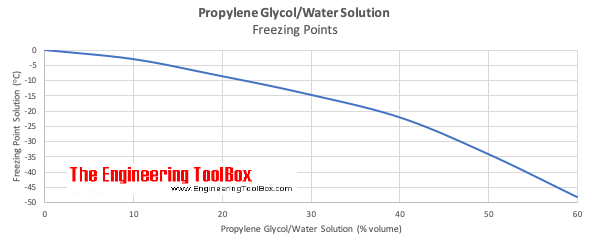 Source: engineeringtoolbox.com
Source: engineeringtoolbox.com
Ethylene glycol is used in the natural gas industry to remove water vapor from natural gas before further processing in much the same manner as triethylene glycol TEG. The primary hazard is the threat to the environment. Continue fomepizole until. 005 m NaCl D. 1 2-Ethanediol Glycol EG Monoethylene glycol Ethylene glycol is produced from ethylene via the intermediate ethylene oxide.
 Source: researchgate.net
Source: researchgate.net
After 48 hours increase bolus dose to 15 mgkg every 12 hours. 398 deg C 74840 deg F Explosion Limits Lower320 vol Upper. These mixtures provide effective freeze protection as long as the proper antifreeze concentration is maintained. For a heat transfer system with ethylene glycol the circulated volume must be increased compared to a system only with water. Mono Ethylene Glycol can be stored in stainless steel aluminium or lined drums tank cars or tank trucks.
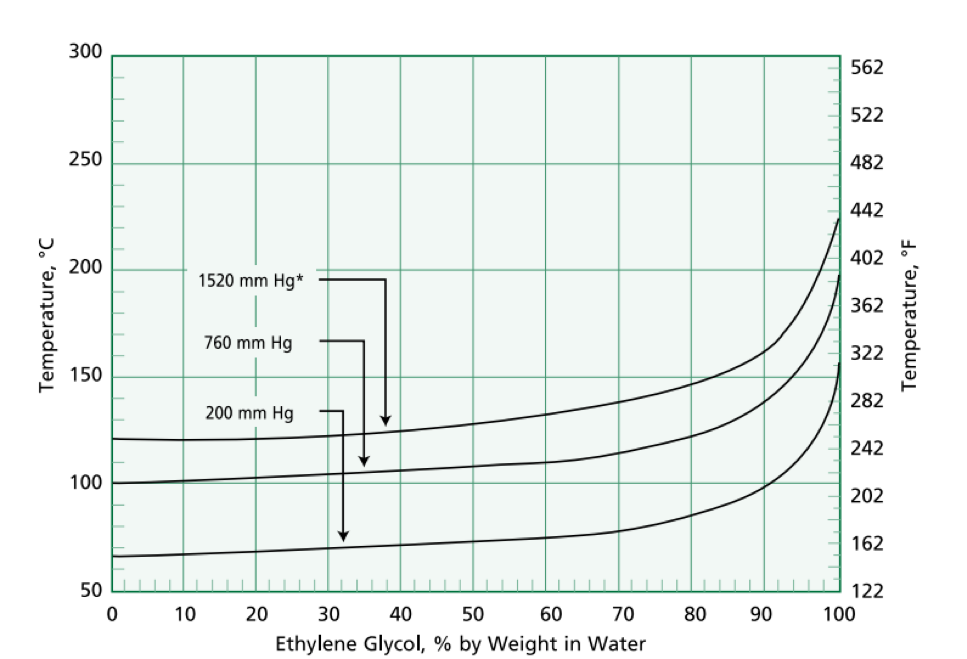 Source: processecology.com
Source: processecology.com
Loading dose 15 mgkg intravenously follow by bolus dose of 10 mgkg every 12 hours. Miscible with Acetone Alcohol BOILING POINT C196 - 199 760 mm HgMELTING POINT C-12 RELATIVE DENSITY1115 20 c VAPOUR DENSITY air1214 VAPOUR PRESSURE0007 kPa 20 c pH-VALUE DILUTED SOLUTION. Of the other three glycols triethylene glycol TEG is the most commonly used glycol for dehydration of natural gas because of the advantages relative to diethylene glycol DEG. In a 50 solution with. Et al New England Journal of Medicine Feb.
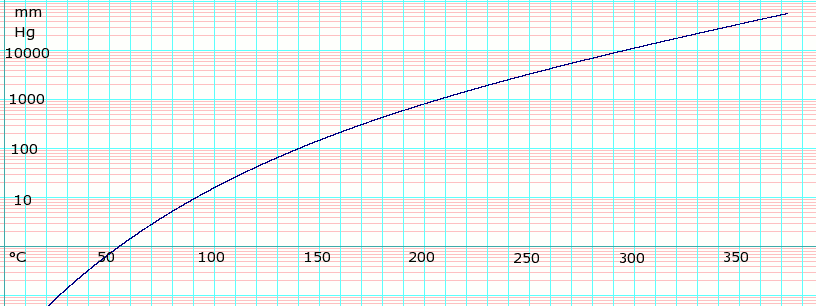 Source: en.wikipedia.org
Source: en.wikipedia.org
Mono Ethylene Glycol can be stored in stainless steel aluminium or lined drums tank cars or tank trucks. 1530 vol NFPA Rating. How to enter Lot Number COO Search. In a 50 solution with. COMPOSITION ETHYLENE GLYCOL 100 107-21-1 4.
 Source: evanscoolant.com
Source: evanscoolant.com
Ethylene Glycol must not be used due to toxicity so non-toxic Propylene Glycol is used. Health - 2 Fire - 1 Reactivity - 0 MATERIAL USE. Dust mask type N95 USEyeshieldsGloves. Ethylene glycol EG is not used in a conventional glycol dehydrator as described below. 8 2001 3446 p.
 Source: en.wikipedia.org
Source: en.wikipedia.org
How to enter Lot Number COO Search. Polyethylene glycol average M n 6000. Which solution will have the lowest boiling point. The majority of solvent cleaning work is performed in equipment of two types relative to flash point either an open tank or a closed tank. Immediate steps should be taken to limit its spread to the environment.
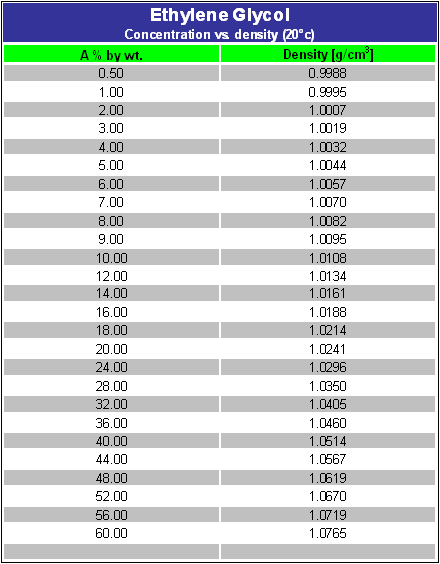 Source: mt.com
Source: mt.com
Which solution will have the lowest boiling point. After 48 hours increase bolus dose to 15 mgkg every 12 hours. The main use of EG in the dehydration of natural gas is in depressing the hydrate temperature in refrigeration units. These types of systems are pressurized and should only be serviced by a qualified solar heating. 1530 vol NFPA Rating.
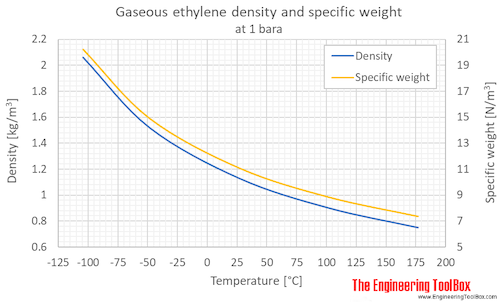 Source: engineeringtoolbox.com
Source: engineeringtoolbox.com
Which solution will have the lowest boiling point. Find Sigma-Aldrich-81260 MSDS related peer-reviewed papers technical documents similar products more at Sigma-Aldrich. Fomepizole protocol Brent J. 005 m CaCl2 C. A small amount less than 1 is used to control insects in some stored agricultural products and a very small amount is used in hospitals to sterilize medical.
If you find this site serviceableness, please support us by sharing this posts to your preference social media accounts like Facebook, Instagram and so on or you can also bookmark this blog page with the title ethylene glycol flash point by using Ctrl + D for devices a laptop with a Windows operating system or Command + D for laptops with an Apple operating system. If you use a smartphone, you can also use the drawer menu of the browser you are using. Whether it’s a Windows, Mac, iOS or Android operating system, you will still be able to bookmark this website.